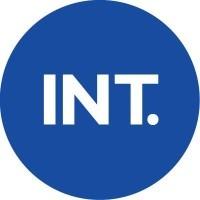Indus Net Technologies Smart Underwriting
Uncovering Hidden Patterns in Social, Health, and Financial Data to Protect Insurers and Empower Safer Decisions.
Created on 25th October 2024
•
Indus Net Technologies Smart Underwriting
Uncovering Hidden Patterns in Social, Health, and Financial Data to Protect Insurers and Empower Safer Decisions.
The problem Indus Net Technologies Smart Underwriting solves
The application is designed to assess and score potential risks associated with insurance applicants by analyzing multiple data sources. It combines insights from three primary data types: social media, bank statements, and health metrics.
Social Media Analysis: By evaluating captions and posts, the application gauges lifestyle indicators or risky behaviors that could influence insurance risks.
Bank Statement Monitoring: Spending patterns are analyzed to identify where the user spends money, such as restaurant and hospital bills, providing insight into their financial stability and health-related expenditures.
Health Tracking: Smartwatch data enables tracking of daily activities and various health metrics (like physical activity, sleep patterns, or heart rate), allowing the system to detect potential health risks.
Each category is assigned a threshold, contributing to an overall score out of 10. This score helps insurers make informed decisions about applicants’ risk levels, promoting proactive and personalized insurance management.
Challenges we ran into
Data Privacy and Consent:
Ensuring compliance with data privacy laws like GDPR is essential, as handling sensitive social media, health, and financial data requires user consent and careful management of personally identifiable information (PII).
Data Quality and Accuracy:
Inconsistent or inaccurate data from sources like social media captions or wearable devices can affect the reliability of risk assessments.
Bias in Scoring Models:
The scoring system may unintentionally favor or penalize certain demographics if the model is trained on biased data or lacks diverse perspectives.
Defining Appropriate Thresholds:
Setting the right thresholds for risk indicators is challenging, as too strict or lenient thresholds may lead to inaccurate predictions.
Interpretability of Scores:
Providing understandable explanations for complex, multi-source scores can be difficult, impacting user trust and decision-making clarity.
Integration with Multiple Data Sources:
Combining diverse sources such as social media, bank statements, and smartwatches presents integration challenges due to differences in data formats and compatibility.
Real-Time Data Processing:
Real-time analysis requires significant computational resources, which may be hard to scale and maintain cost-effectively.
Regulatory Compliance:
Compliance with varying regional regulations around the use of health, financial, and personal data can complicate deployment and require continuous legal oversight.
Handling Missing Data:
Users might lack data in some categories, complicating the creation of a comprehensive risk score and potentially affecting prediction accuracy.
Tracks Applied (1)
Empowering Customers to Leverage their Digital Footprints
Technologies used
